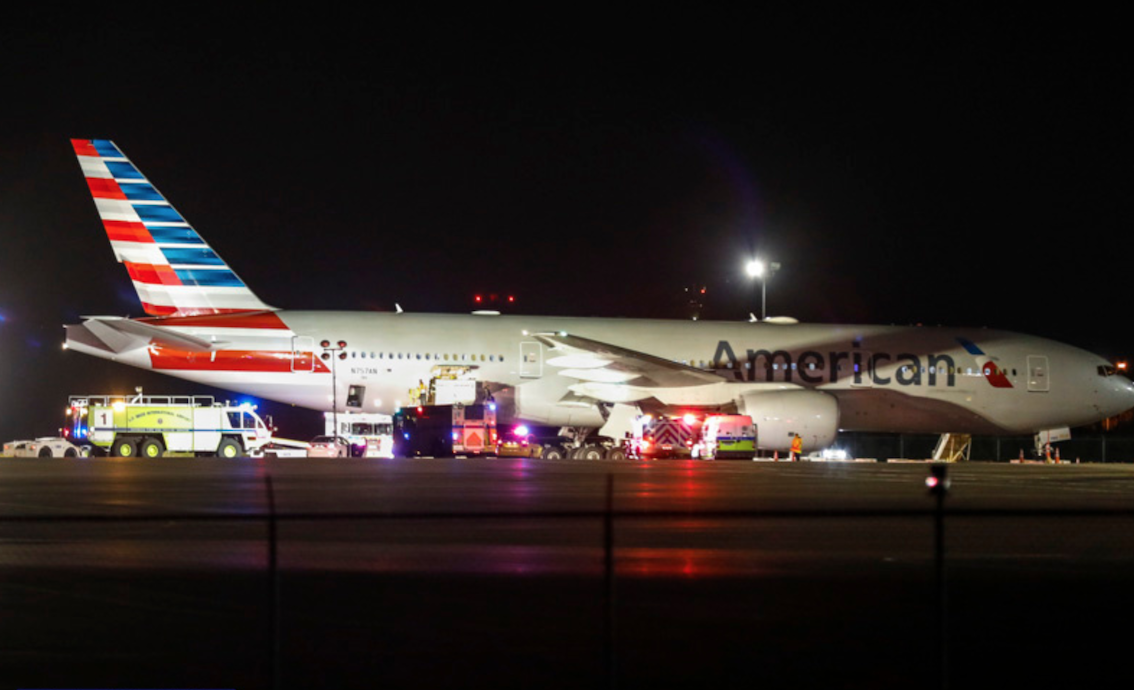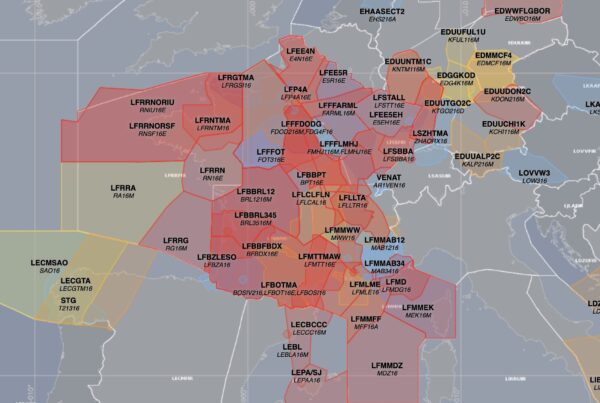The Bermuda AIP says that they have Fire Category 9 from 07–23 local time, but also that “during uncontrolled hours of operations BFRS/ARFF will be called out at CAT 9″.
So does this mean that Fire Category 9 is essentially ALWAYS available? And how long does it really take to call them out in an emergency?
We got an answer to that question the other day, when an American Airlines B777-200 en-route from KJFK/New York to SBGL/Rio de Janeiro had to make an emergency divert to TXKF/Bermuda due to a suspected fire in the cargo hold.
ATC cleared the flight direct to TXKF/Bermuda. They advised the crew that the tower at the airport was not staffed at the time (although the runway has pilot controlled runway lighting), but that emergency services had been alerted and would be on standby for their arrival.
38 minutes later, at 12.18 am, the flight landed, and the emergency services were indeed there as promised.
The whole cargo fire thing turned out to be a false alarm, although we’re very thankful to one of the passengers–the supermodel Joan Smalls–for documenting the ordeal on social media.
We contacted the airport authority to check exactly how long they really need for emergency diverts, and whether they really do provide Fire Cat 9 in these situations. Here is their response:
“ARFF is available 24hrs and yes will be staffed at the appropriate level to be cat 9 at all times. After 2300 Local Time when the local airport is uncontrolled , ARFF requires 20 minutes for call out for such events like diversions.”
So there you have it. You can always rely on Fire Cat 9 at TXKF – just make sure you give them at least 20 minutes notice!
More on the topic:
- More: EU Updates Lost Comms and Emergency Descent Rules
- More: FIRE on the NAT! Where to go in an emergency?
- More: What we’re seein’ in the Caribbean
- More: Fire Onboard: A Pilot’s Worst Fear?
- More: Pax Problems: Do you know who you have down the back?
More reading:
- Latest: Venezuela & Caribbean Airspace Update
- Latest: ReFuelEU: Europe’s new anti-tankering rules explained
- Latest: US CBP biometrics: BizAv rollout still unclear
- Safe Airspace: Risk Database
- Weekly Ops Bulletin: Subscribe
- Membership plans: Why join OPSGROUP?











 Get the famous weekly
Get the famous weekly 






ICAO Annex 14 – RFFS Categories Based on Aircraft Length & Fuselage Width (aircraft overall length; maximum fuselage width)
Category 1 – < 9m (29.5'); 2m (6.6')
Category 2 – 9m (29.5') – <12m (39.4'); 2m (6.6')
Category 3 – 12m (39.4') – <18m (59.1'); 3m (9.8')
Category 4 – 18m (59.1') – <24m (78.7'); 4m (13.1')
Category 5 – 24m (78.7') – <28m (91.9'); 4m (13.1')
Category 6 – 28m (91.9') – < 39m (128.0'); 5m (16.4")
Category 7 – 39m (128.0') -<49m (160.8'); 5m (16.4")
Category 8 – 49m (160.8') – <61m (200.1'); 7m (23.0')
Category 9 – 61m (200.1') – <76m (249.3'); 7m (23.0')
Category 10 – 76m (249.3') – <90m (295.3'); 8m (26.3')
Actually, there’s a pretty good explanation of RFF categories here: http://bit.ly/2nOUjaO
Thank you very much, David.
I agree, that this information should really be in AD 2.
No flight dispatcher/pilot will normally go through GEN 4 looking for this kind of information.
The statement in GEN 4 puts this in a bit a different context, I believe. This is not really a generic statement that the service is always available on standby outside the published hours. I would not want to plan TXKF as Enroute Alternate outside the published RFF hours, just based on this statement. Maybe this should be clarified with the Bermuda authorities.
You’re right, the statement is flaky at best, particularly given where it’s located in the AIP, which is why we specifically asked them the question for this article. I might go back to them and suggest they update their AIP to have something showing under the proper category on the AD page for TXKF too!
I am looking at the AIP Bermuda – Page AD 2-1-3 dated 17 AUG 17.
AD 2.6 – RESCUE AND FIRE FIGHTING SERVICES
Item 1 – Aerodrome Fire Fighting Category: Category 9 (0700-2300 LT).
Where in the AIP is the sentence “during uncontrolled hours of operations BFRS/ARFF will be called out at Cat 9″ published?
That sentence is there in the AIP, but not where it ought to be. Look under the CHARGES FOR AERODROME AND AIR NAVIGATION SERVICES section (GEN 4-1-1, part 2.2). They should really put that on the page for the AD too!
WTF is CAT 9
CAT = Category. The number determines what level of support that airport provides in case of a fire emergency. Fire Cat’s run from 1 (lowest) to 10 (highest). So Fire Cat 1 is basically one guy with a bucket of sand. Fire Cat 9 is fire trucks, foam, the whole package. Goodness only knows what Fire Cat 10 involves – maybe divine intervention??